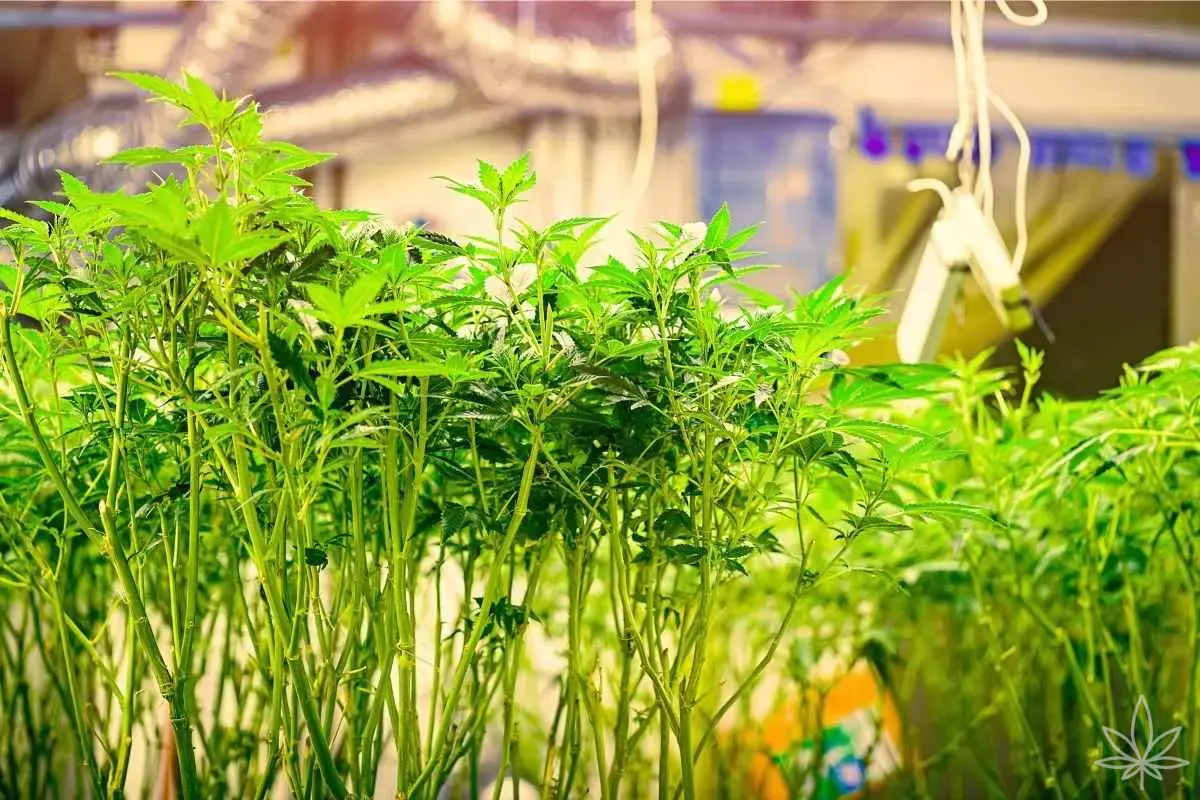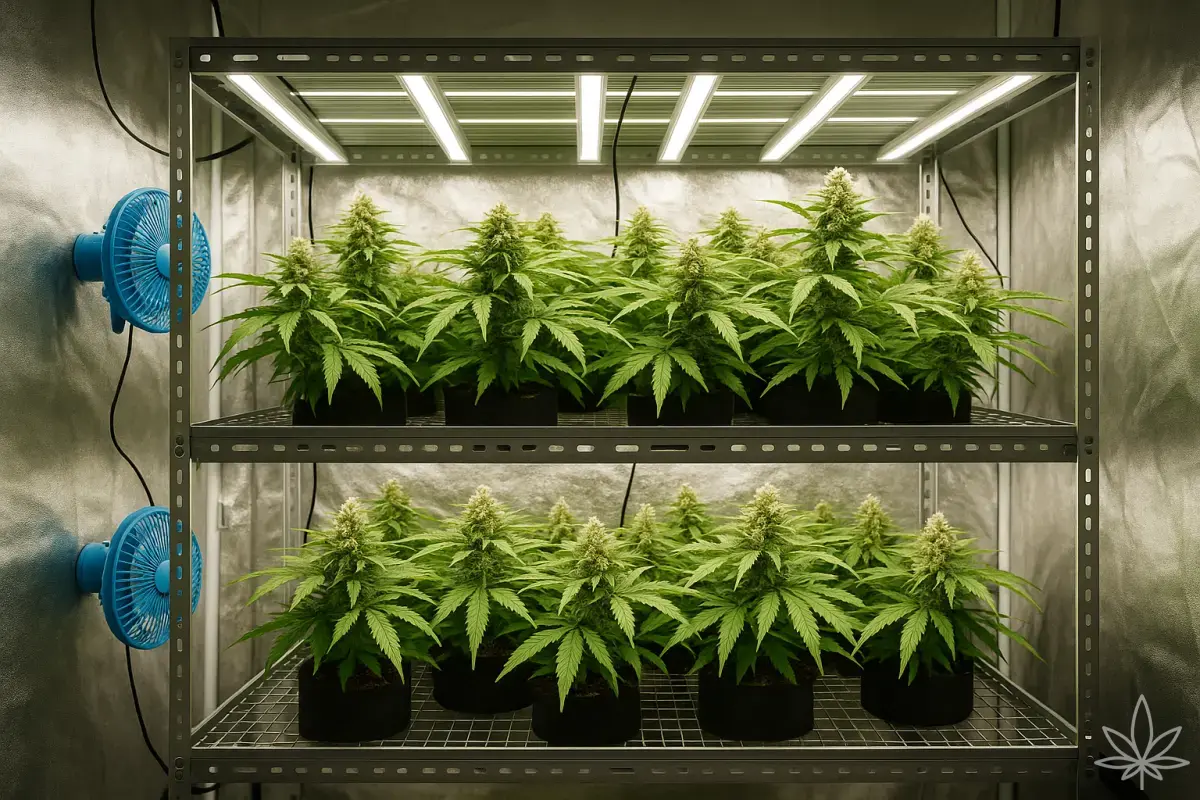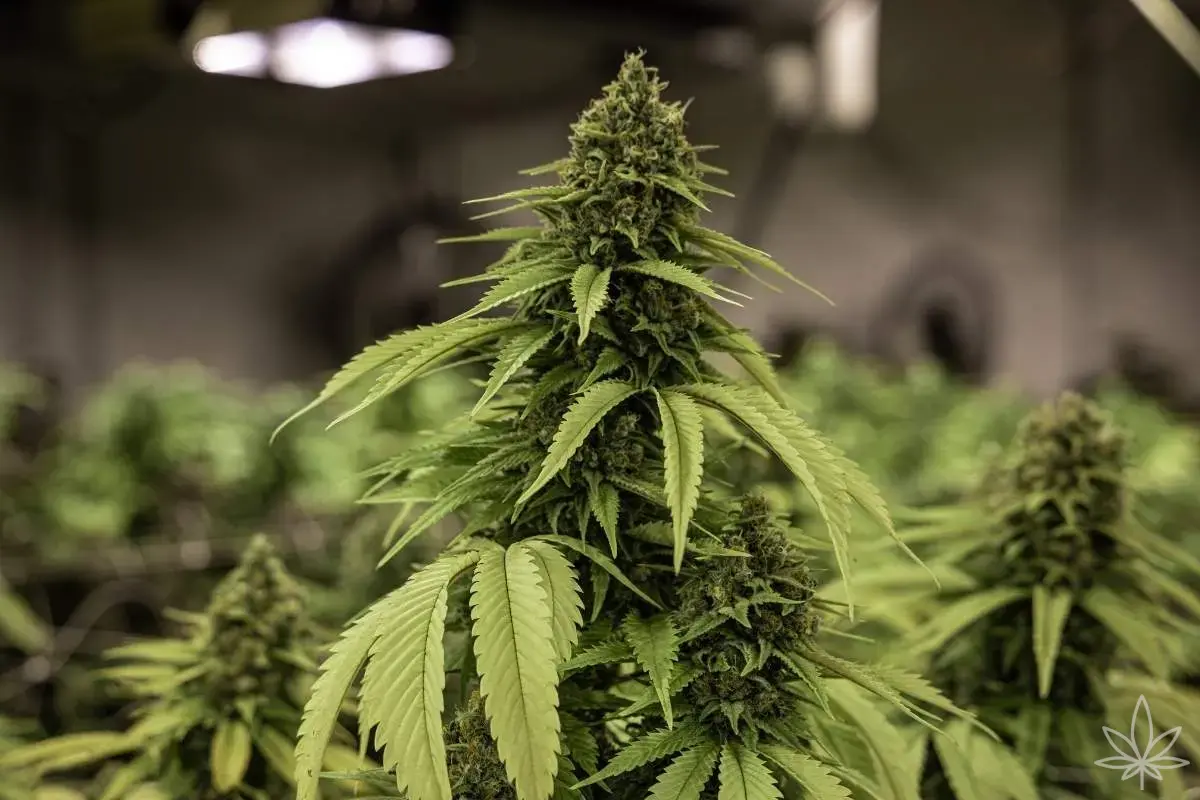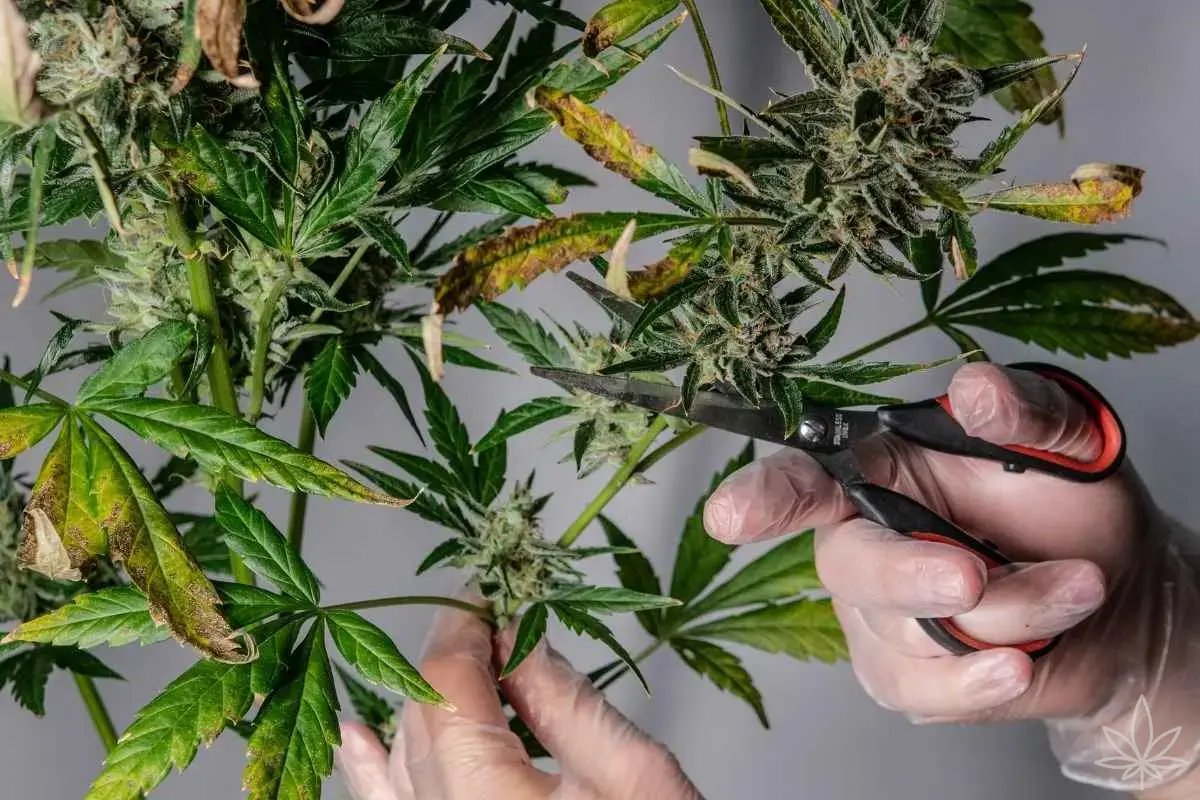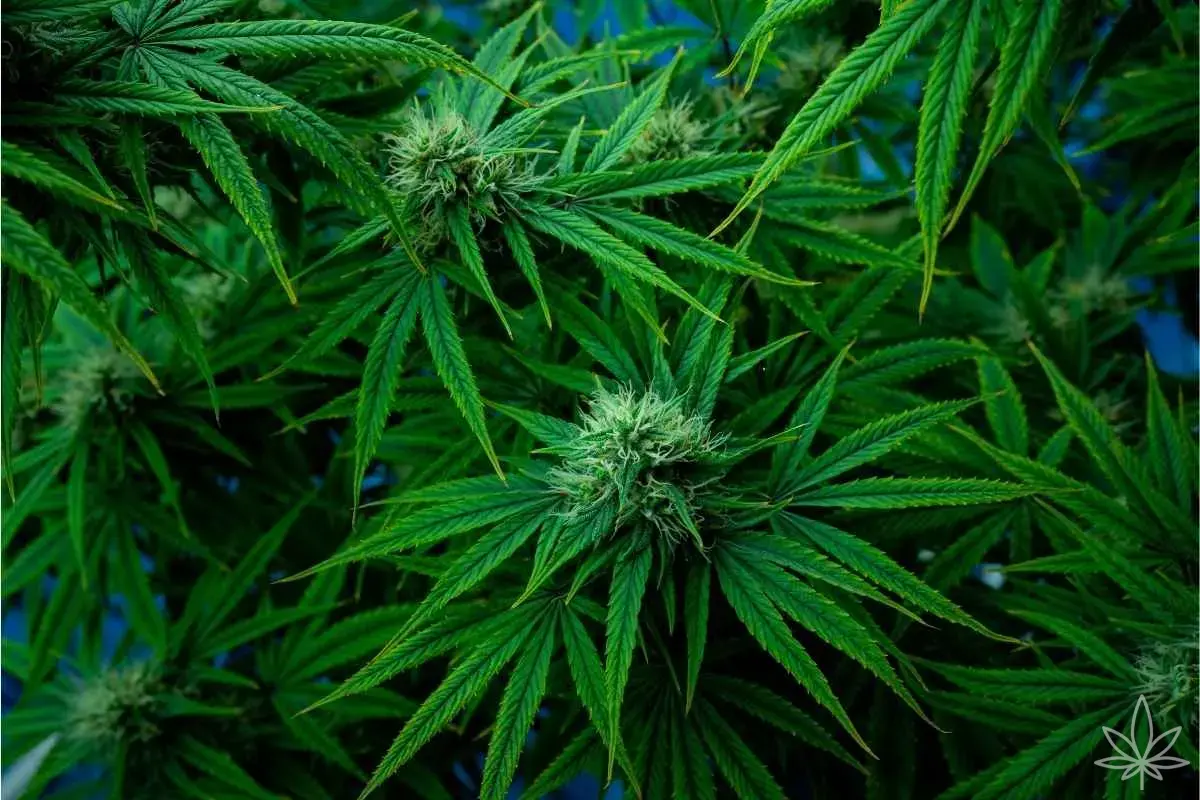Every cannabis grower eventually faces the question: to defoliate or not to defoliate? Some say: “leaves are solar panels, don’t touch them,” while others argue: “without defoliation you’ll never hit maximum yield.” As usual, the truth lies somewhere in between. In this article, I’ll explain what defoliation really does, its pros and cons, and when it’s smarter to just keep your hands off.
What exactly is defoliation?
Defoliation simply means intentionally removing some of a plant’s leaves during the grow cycle.
It’s usually done:
- during the vegetative stage, to let more light reach lower nodes,
- during flowering, to improve airflow and light penetration to the buds.
The idea is not to strip the plant bare, but to strategically remove large fan leaves that are blocking future bud sites.
Arguments for defoliation
- Better light penetration
Light is everything in an LED growroom. Big fan leaves can shade entire bud sites. Removing a few allows lower buds to get more energy and develop better. - Improved airflow
Fewer leaves = more airflow between branches. This reduces the risk of mold and powdery mildew, especially with dense indica strains. - Directing energy
Instead of pumping energy into massive fan leaves, the plant focuses more on bud development. Result: denser colas and higher quality flowers.
Arguments against defoliation
- Leaves are energy factories
Each leaf is a solar panel. Fewer panels mean less photosynthesis. Too much leaf removal slows growth and can reduce yields. - Stress on the plant
Every cut is a micro-injury. The plant needs time to recover. If you overdo it, instead of a yield boost you may get delayed flowering. - Not all strains benefit
Some sativas naturally shed leaves and don’t need much intervention. For them, defoliation is more harm than help.
When does defoliation make sense?
- Very bushy plants (e.g. indica hybrids) → defoliation improves airflow and lowers the risk of mold.
- Small grow tents (60×60 cm) → strategic leaf removal helps maximize light usage.
- Training methods (SCROG, LST) → defoliation supports even energy distribution.
When is it better to skip?
- Small autoflowers → leaf removal can slow them down and cut yields.
- Sativa strains with open structure → naturally have good airflow.
- Beginner growers → if you’re inexperienced, it’s safer to leave too many leaves than to strip too many.
Defoliation techniques
- Light defoliation — just a few fan leaves that block bud sites.
- Heavy defoliation — more aggressive, removing whole layers of leaves during stretch (first 2 weeks of flowering).
- Selective picking — pro growers remove a couple of leaves daily instead of doing one big session.
Real-world examples
- Grower in a 120×60 cm tent, 240 W LED, indica-hybrid: after heavy defoliation in week 2 of flowering, the harvest was about 500 g/m² of dense colas.
- Grower with a sativa under 400 W HPS: after defoliation, the plant slowed down and the yield dropped to 350 g/m², while without defoliation it gave over 400.
Common mistakes
- defoliating when the plant is already stressed (e.g. after overwatering or nutrient issues),
- removing leaves just before harvest — unnecessary stress, no benefit,
- stripping too many leaves at once → the plant ends up “naked” and needs a long recovery.
Conclusion
Defoliation is a tool, not a rule.
- In bushy plants it improves airflow and light penetration.
- In small tents it helps you get the most out of your light.
- With the right strains it can improve bud quality.
But:
- It always causes some stress.
- Too much defoliation lowers yield instead of raising it.
- Before you start, learn to observe your plants and respond to their needs.
👉 The simplest rule? Only remove a leaf if it’s really in the way.

